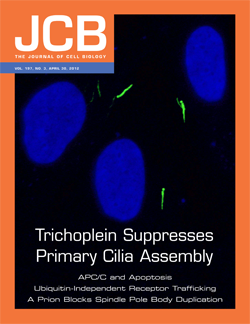
Arthur de Jong, PhD-student at Functional Genomics, publishes in Journal of Cell Biology.
Synapses are specialized sites at which neurons communicate with one another. Pre-synaptic axons release neurotransmitter molecules. These are received by receptors on post-synaptic dendrites in order to induce signal transduction. Synapse activity is the basis of all higher order processes driven by the nervous system.
The strength of synaptic communication is regulated by a number of factors. For the current study, De Jong investigated positional effects on synaptic strength. For this, he studied cultured neurons of rodent hippocampi.
His findings are published in the April issue of The Journal of Cell Biology.

De Jong conducted a range of experiments. Histology revealed lower abundances of pre-synaptic proteins at distant synapses. Live cell imaging showed fewer transmitter-containing vesicles to be released into the synaptic cleft.
The phenomenon of distance dependency of the pre-synapse is a robust one. De Jong: “We did not find one pre-synaptic protein whose abundance does not obey the distant dependency principle. In addition, the effect even holds up to seven days after blocking neuronal activity.‚ The effect was strongly reduced in neurons from the dentate gyrus, compared to pyramidal neurons. This shows the effect to be cell-type specific.
As far as underlying mechanisms are concerned, De Jong suspects synaptic adhesion molecules to be involved. The department of Functional Genomics now considers appropriate strategies for follow up studies.
Hear Arthur explain about his study in a Rockefeller University Press Podcast Biobytes
by Kevin Janssen